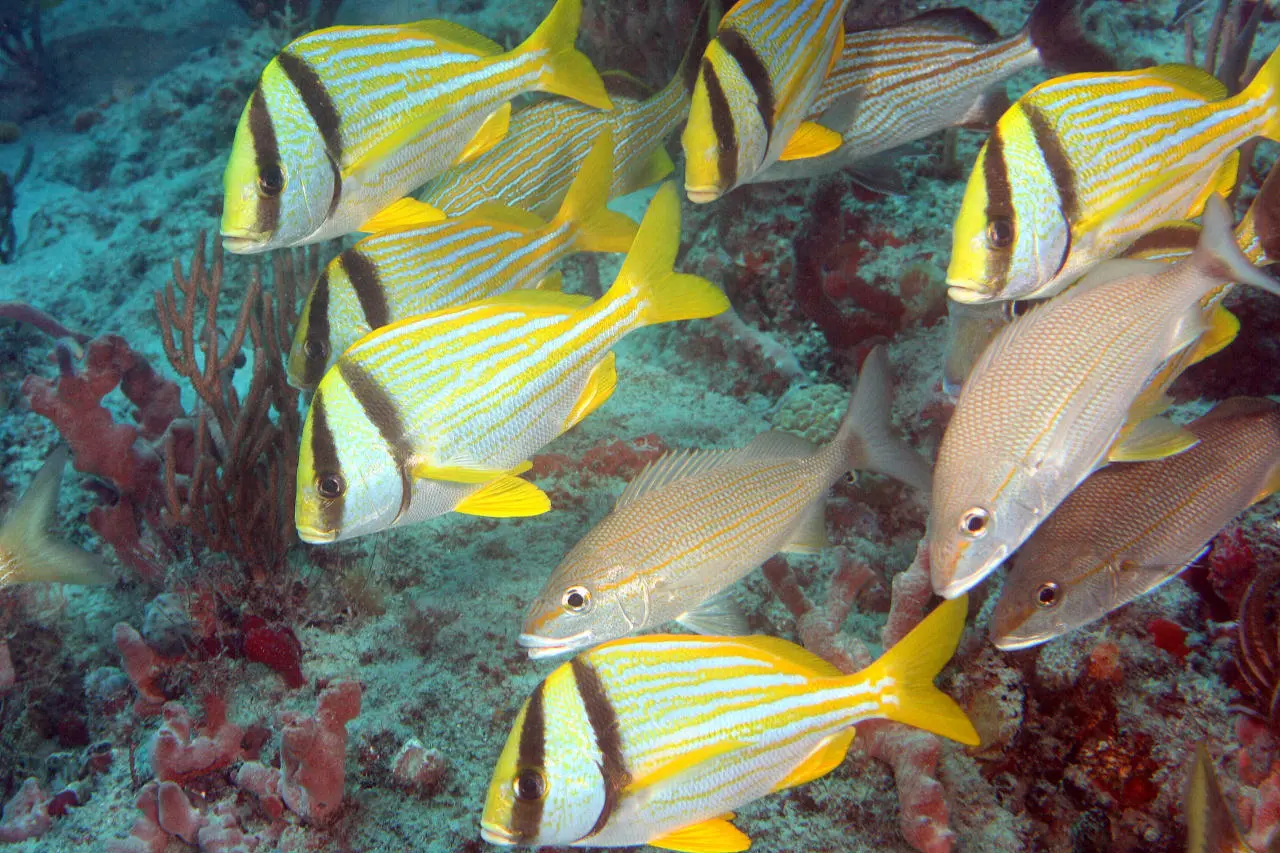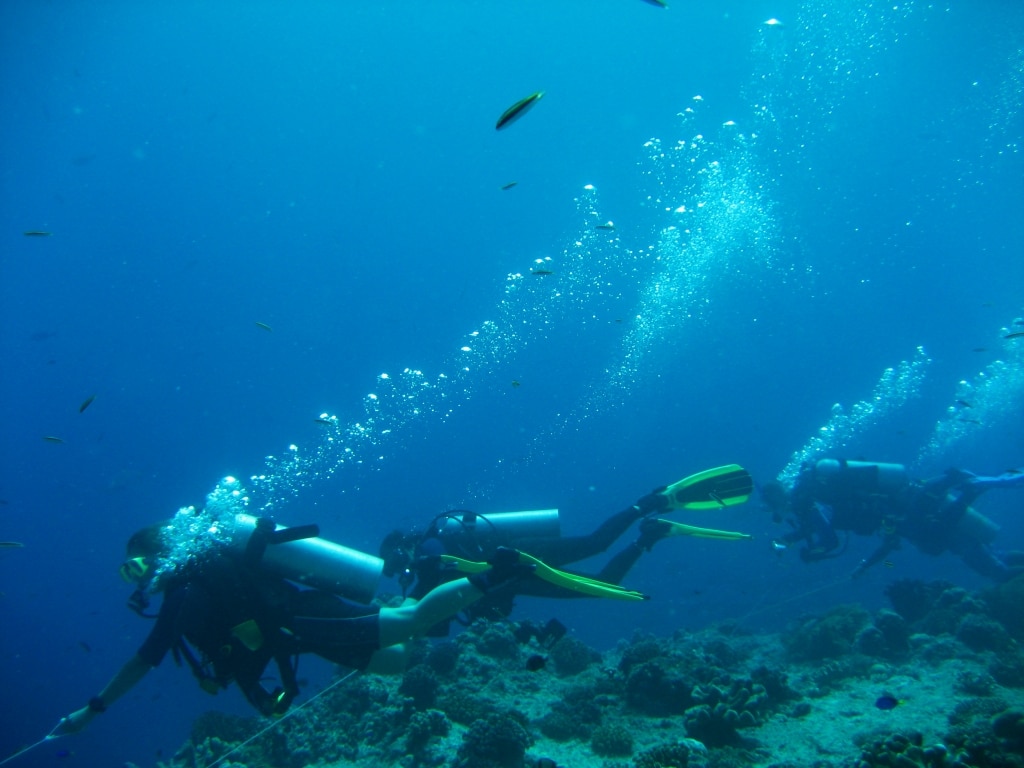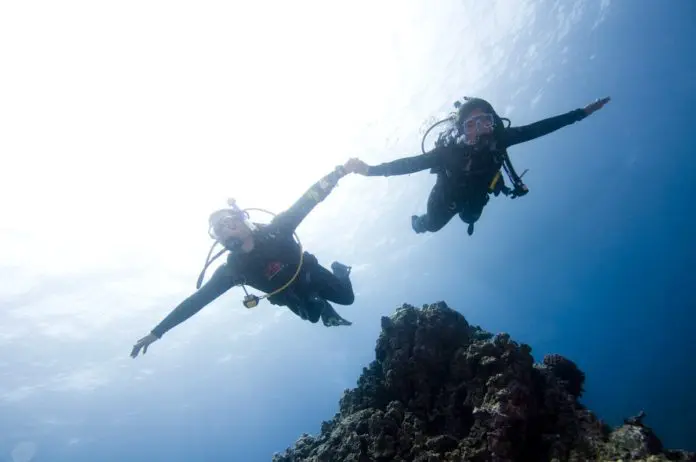Drift diving is an advanced skill that adds extra dimension to your diving. We learn in our open water course to start our dives by swimming into a current. The principal reason is that you use more breathing gas supply and physical energy fighting a current than going with it. When we swim into a current at the beginning, we can have the current assist us as we return to our starting point. If we start with the current, we may find that we do not have the extra gas or strength to fight the current to get back. It does not really matter in this scenario if we are doing a boat dive or a shore dive, we generally have a goal to end our dive at the same point as we start it. We start at point A and end at point A. The drift dive is a dive that starts with the current but the dive plan does not plan to have you to return to your entry point. We start at point “A” and allow the current to push us to point “B”. There are many different variations we can look at but that is the key point.
Drift Diving Speeds
One of the concepts many divers have problems placing in perception is the speed of a current. Some drifts may be slow and lazy while others pack the thrill of a roller coaster. While there is no standard on what is a mild current or strong current there are some generally acceptable numbers. Generally any current less than .5 knots are considered no current or maybe a weak current. Most divers will have no difficulty with these currents. However, at the surface even a .5 knot current will move you out of reach of a down line in the time it takes you to adjust your mask. As a current reaches around .5 knots many smaller schooling reef fish will turn to face the current. From .5 knots to 1 knot the current is generally described as light, with 1 to 2 knots being called medium current. The reef fish in a medium current will still be in schools, however, the school will cover a broader area and will be flatter and closer to the bottom. Most divers, however, will find this medium current too strong to swim against for prolong times. A number of years ago, Navy frogman were tested to determine the maximum sustainable current they could endure. They were to swim to maintain their position. A current of just 1.2 knots was the average these professionals were able to deal with.

The term knots has been thrown around without really discussing it. Water speed is measured in knots, which is nautical mile per hour. A nautical mile is equal to 1.15 miles or 1.85 kilometers. The average person walks at about 3 miles per hour or about 2.6 knots. So a medium current is slower than a person can walk. Many divers have seen other divers use or maybe used themselves a diver propulsion vehicle (DPV). These divers with the DPV zip pass us at high speeds, but in reality 2.6 knots is also the top speed of many diver propulsion vehicles designed for recreational divers.
When the current is between 2 and 3 knots it is generally called a strong current and the schools of smaller reef fish disperse into crevices or under ledges. Larger fish such as sharks generally find protected areas where the current is lower and open their mouths for food to come to them. Smaller fish that get caught in a current are unable to do anything but ride along to the waiting mouth. Divers can find that abrupt head movements could cause the mask to be ripped from their face or regulator from their mouths. Dangling equipment can impact against the body leaving bruises. In a strong current the diver has given up almost all directional control of the dive. They are not able to turn into the current and fin to stay in one place to watch something. Even holding onto something might not be possible. In some areas such as in Palau, a reef hook is used to hold oneself in place. This device is a large fish hook with the barb removed and a strong line. One end is connected to the divers BCD and the hook is inserted into a rock crevices. Adding a little air to the BCD allows the diver to float above the reef in one place, a sort of human kite. A current of up to 3 knots is generally the strongest currents that all but the most experienced diver will dive.
Drift Diving Key Points
The concept of drift diving makes it sound super easy and on many dives it is, however, there are new elements that you will need to deal with drift diving. These elements may require better control of certain skills. The drift dive is from point “A” to point “B”, but getting all the divers to the same point “B” is not always so easy. If you are diving from a boat, part of the plan is to insure the boat knows where point “B” is. Most often the dive leader will have a float and the boat follows the float from a distance. There are times when diving with a float is not practical. A stronger surface current could pull the float faster than the diver is going or even pull him in a different direction. In cases like this the boat will follow the divers bubbles. Since the boat is following either a float or a mass of bubbles, if you are not with the group, then the boat might not see you. A 40 minute dive in a 2 knot current will carry you about 1.3 miles. If that 1.3 miles is in a different direction you will be hard to find.

Here are some key points you should consider about drift dives.
- Understanding the dive plan and dive brief is always important, but, there is no room for misunderstanding in a drift dive. Follow the dive plan as accurately as conditions permit.
- Dive with a computer. On most drift dives you will be following the terrain or along a wall. It is difficult to be in a current and constantly monitor your depth. Also, a current might suddenly drag you deeper than you had originally intended and the dive computer will let you know how to recover.
- Understand lost buddy, lost team procedures and when they happen. There are two parts here, on most dives, maintaining buddy contact is more critical, and is expanded to other dive teams. The dive plan should spell out your actions in case you lose your buddy or you and your buddy lose the group.
- Have the right gear and know how to use it. All the gear you have should be streamlined and if not needed left on the boat. There is really no specialized equipment you need for drift diving. There is some equipment that you should have which might not use on other dives. Each diver should have a Delay Surface Marker Buoy (DSMB). If you are separated from the group, The DSMB will be easier to see from a boat than just a diver on the surface. Using a DSMB instead of a standard safety sausage allows you to deploy it while you are doing a safety stop. This will give additional time for the boat to see it as well as a reference point for your stop. You should also have a whistle or other loud audible device.
- The speed of the current that you are moving in may require you to react faster than you may normally be used to.
- Currents can change at different levels or may even change during a dive. This can cause you to be moving at a different speed and even direction than other dive teams. A dive team that descends slower than the other teams might find they drifted out of sight of the leader, or maybe in front of the group. Watching the dive leader both during decent and the remainder of the dive will show you how the current is impacting them, giving you time to adjust.
- Being able to equalize easily can be important. Some drift dives require a negative buoyancy decent. It is possible that the dive plan calls for all divers to enter the water as dive teams in rapid succession, with no air in the BCD and drop down to a lesser current. Stopping to equalize could place you beyond the group.
- Do not make contact with the float line unless you are the one controlling it. You could cause the line controller to lose the line or if you are in a stronger current, cause them to be dragged by you.
- Buoyancy control can become even more important than on a normal dive and you may have to react faster.
- The bottom, along a wall or behind a reef may provide some protection from a current. However, stay a safe distance away so that you are not thrown into it.
- Be careful where and what you grab. Never grab live corals and look into crevices before using them. Something may already be there.
- Avoid being forced by the current into marine life. Sharks love to find places to rest facing a current waiting for lunch. Maintain control so you do not add yourself to the menu.
- Stay clear of the boat’s propellers and avoid the down current side of the boat. Follow the boat crews instructions and exit as speedily as possible when permitted.
When you start doing drift dives, start off easy and consider taking a drift dive class. Drift diving certification is not mandatory and if you have an experience drift diver with you it may not be necessary. Just remember that you should always dive in your comfort level and that drift diving can be very fast paced, which also means accidents can happen faster.

